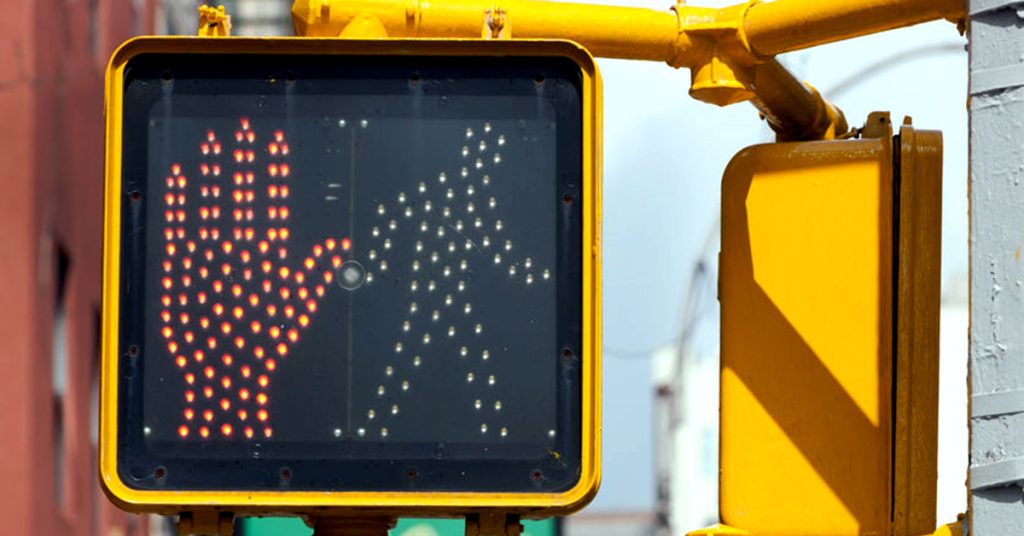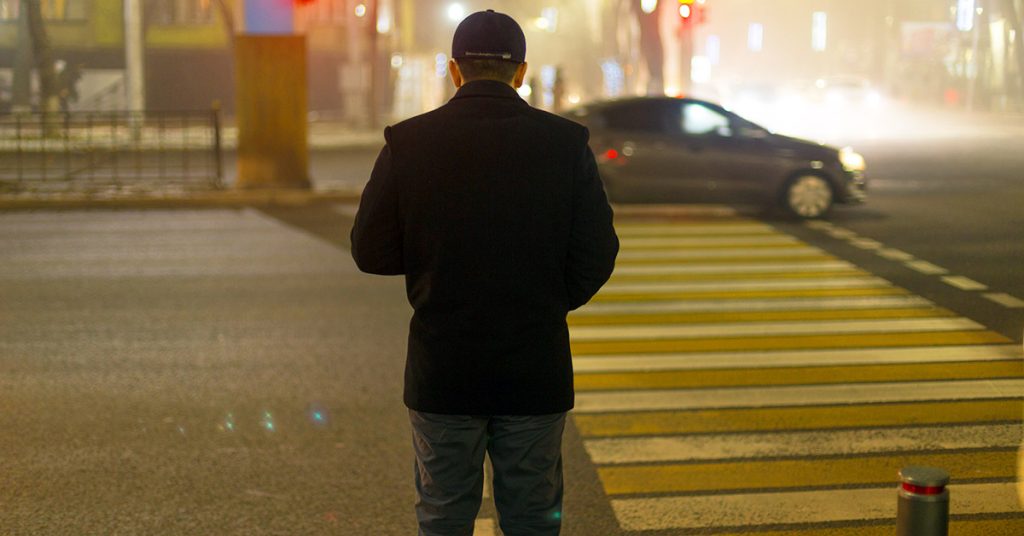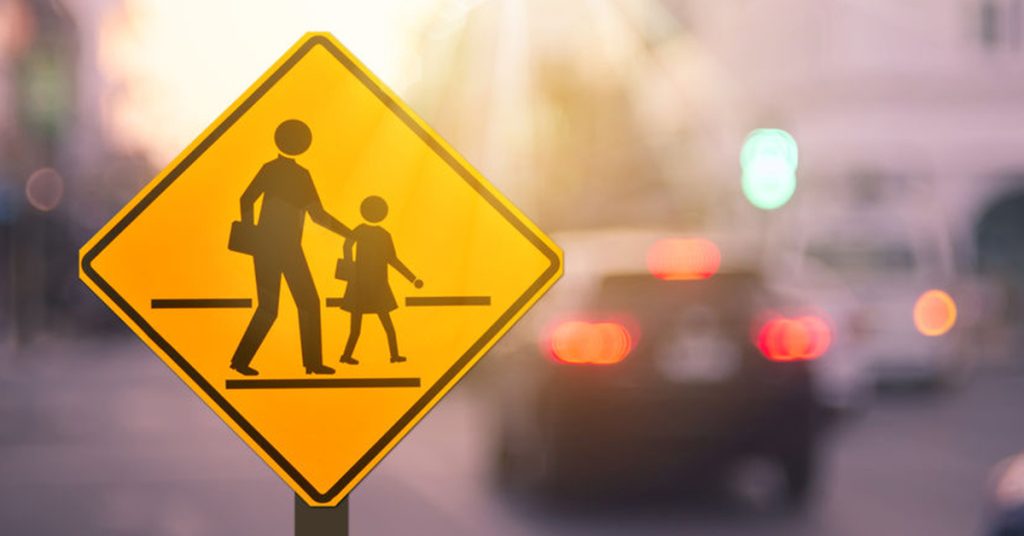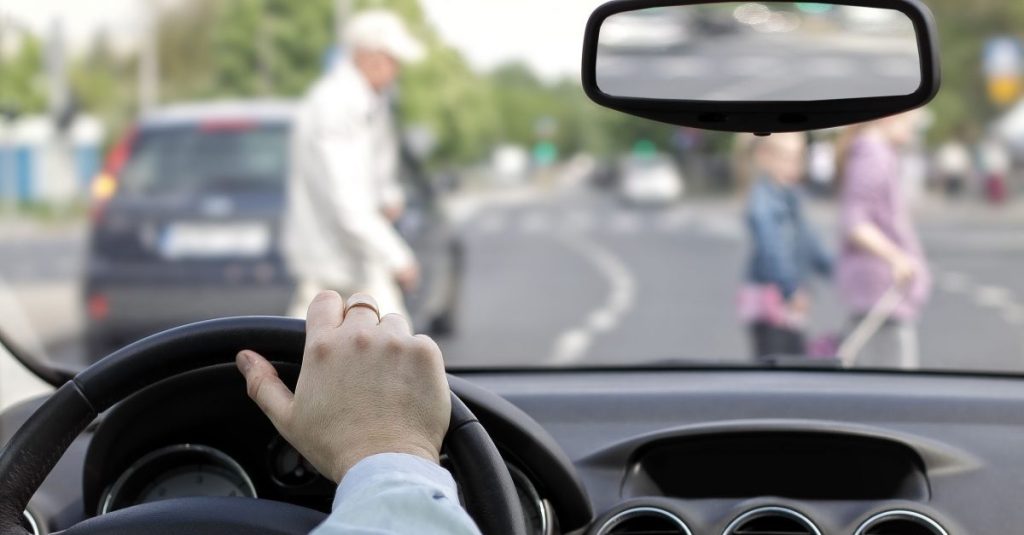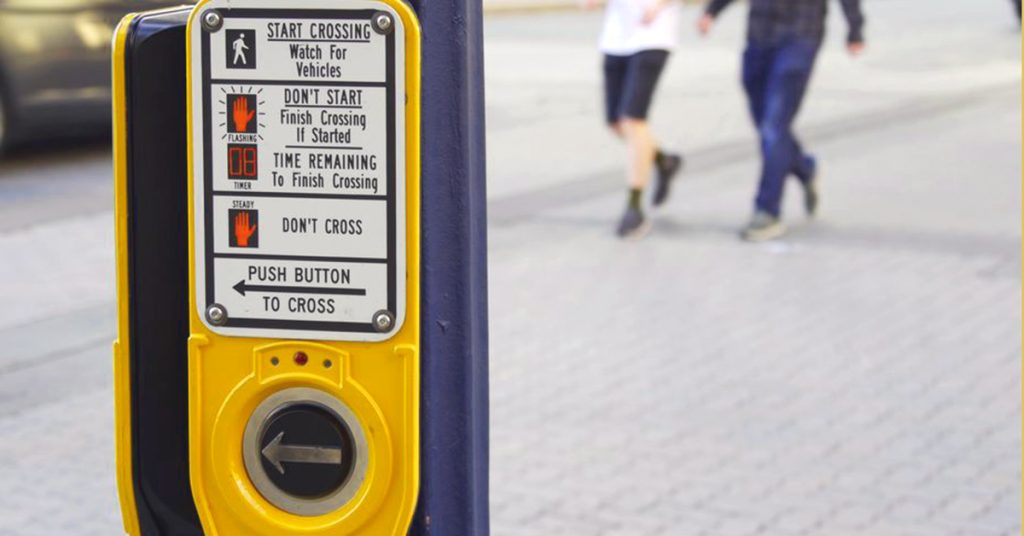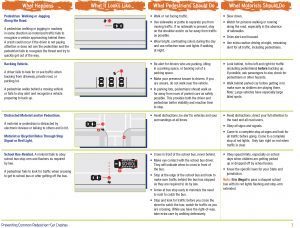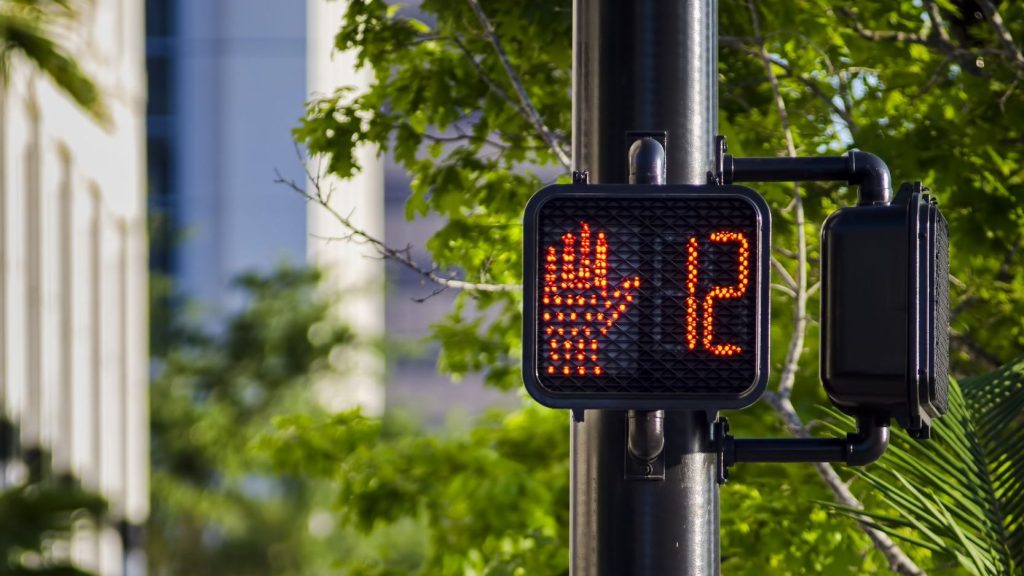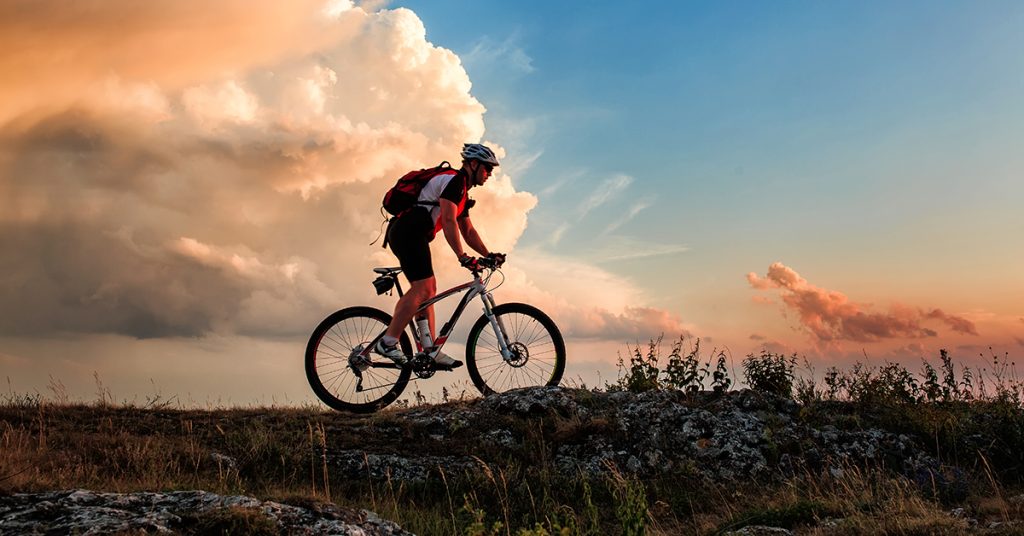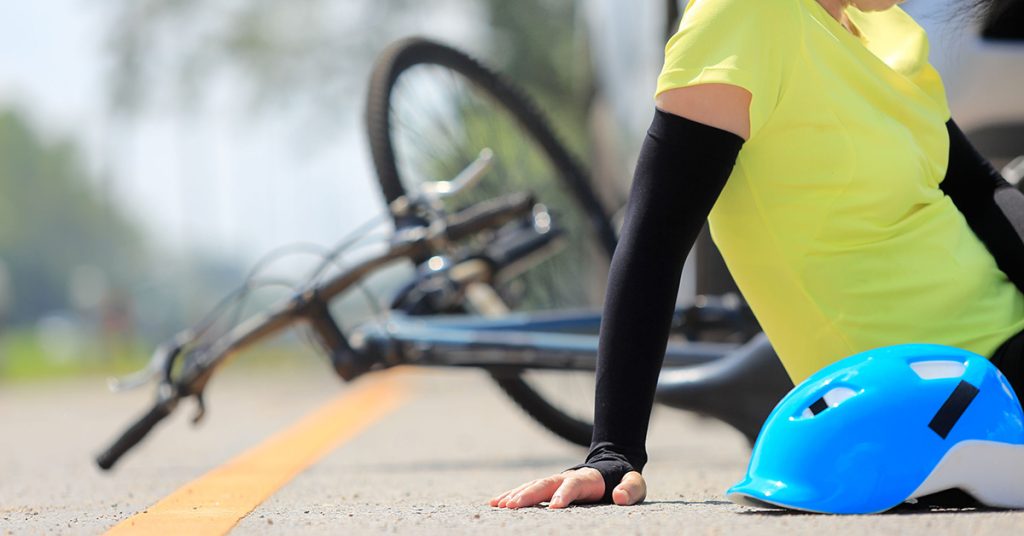Posts Tagged ‘Boston pedestrian accident lawyers’
More Pedestrian Accidents Were Fatal in Massachusetts Last Year
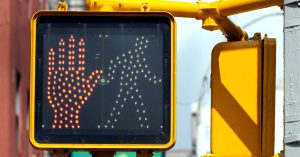
Dangerous roads: There were more pedestrians killed in traffic accidents in Massachusetts during 2021.
As the New Year begins, Massachusetts closes the door on a very dangerous year for pedestrians.
There was disappointing news on the state’s roads, as traffic fatalities rose 19 percent over 2020, according to MassDOT preliminary data (January 4, 2022). But those who walked faced the most risks. Pedestrian fatalities increased a stunning 38 percent, coming in near pre-pandemic levels.
Statewide, 76 pedestrians were killed in motor vehicle accidents last year, compared to 2019, when there were 78 deaths. The state recorded 55 pedestrian deaths in 2020, when traffic volumes fell early on during the Massachusetts “stay-at-home” and essential worker orders.
Most concerning is when a driver injured a pedestrian last year, the encounter was more often fatal. According to the January 4th data, in Massachusetts, you had a greater chance of surviving a pedestrian accident in 2019 than you did last year.
The state recorded about 2,197 pedestrian accidents in 2019. About 3.5 percent of these resulted in fatal injuries. Meanwhile, in 2021, there were 1,520 reports of motor vehicle accidents involving pedestrians. Five percent of these crashes claimed a pedestrian’s life.
These are preliminary numbers from the MassDOT. It is important to remember these could rise in future days and weeks.
Drivers Have a Duty to Decrease Speed At Times for Safety
Drivers may operate recklessly or make unsafe choices, such as speeding or running a red light, during any season. Come winter, when the snow and ice arrive, these decisions can be deadly for pedestrians. Drivers may have less time to make corrections.
In Massachusetts, drivers have a duty to use reasonable care and this includes traveling at a safe speed.
Drivers have a duty to observe the posted speed limit as the maximum that is “reasonable and proper.” But they must use good judgment and lower their speed for safety, “when a special hazard exists with respect to pedestrians or other traffic, or by reason of weather or highway conditions.” M.G.L. c. 90, § 17.
This describes many winter driving situations.
Still, as a pedestrian, you should expect drivers may speed and approach you too closely in the winter. While you cannot control this, you can try to stay visible. When drivers see you, they may recognize their responsibility to slow down as appropriate for the road conditions.
Safety Tips for Pedestrians During the Winter Months
Use Sidewalks. Sidewalks are an essential safety tool in the winter. Always use sidewalks and stay inside the snowbank when waiting for crosswalk signals.
Consider Yourself a Pedestrian. Most of us are a pedestrian at some point in the day. You may consider yourself a pedestrian if you walk to work or take your children to school. Or if you walk for exercise. But you are also a pedestrian when you walk through the grocery store parking lot, drop off a package at the post office or wait for a bus or rideshare. Recognize this and take steps to protect yourself just as you would if you were walking to work or around your neighborhood.
One challenge is pedestrians do not have the same tools as drivers, such as safety mirrors. You may not be able to see drivers up high in trucks or work vehicles. Because of this, it is important to use crosswalks and try to make eye contact with drivers before crossing streets, intersections and parking lots. Again, when drivers see you, they are more likely to slow down or look for you before they turn and this is even more critical when snow is taking up room on the roads.
Stand Out in Bright Colors. Now is a good time to add a few bright colors to your wardrobe. Wear neon or reflective clothing to help drivers see you. This is a simple step with a big return because it encourages drivers to maintain a safe distance.
Look for Crosswalks with Traffic Signals and Safety Signs. Look for crosswalks with traffic signals, which are designed to guide drivers and pedestrians at all hours, through all types of weather. Keep in mind you may not be able to see traffic signs or paint markings after winter snowstorms.
Stay Away from Plow Trucks! Stay away from plow trucks on roads or parking lots. Grocery store parking lots are full of hazards in the winter because they see so much traffic and may need frequent plowing. You may find snowplow drivers are continuously at work. It is never safe to approach a snowplow, even parked vehicles. The driver could make a sudden decision to back up.
Free Legal Consultation – Boston Personal Injury Lawyers
Founded in 1992, Breakstone, White & Gluck has been consistently recognized among the top personal injury law firms in Boston and across Massachusetts. Our lawyers specialize in representing those injured by negligent driving and we provide experienced and aggressive representation to pedestrians and families after serious crashes and crosswalk accidents.
If you have been injured, learn your legal rights. For a free legal consultation, contact Breakstone, White & Gluck of Boston at 800-379-1244 or 617-723-7676 or use our contact form.
As the Days Get Shorter, Make Pedestrian Safety a Priority in Massachusetts
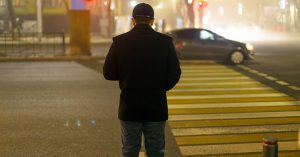
As the days get shorter, drivers must watch for pedestrians. The number of pedestrian fatalities has risen in Massachusetts during 2021.
The majority of all pedestrian fatalities occur at night or in dark light conditions, according to the National Highway Traffic Safety Administration (NHTSA). This is a significant point come October in Massachusetts, when the days get shorter and the walk home becomes darker.
As a driver, renew your commitment to travel safely near pedestrians this Fall. This is critical. In addition to shorter days, Massachusetts is seeing a rise in pedestrian fatalities as traffic volumes start to rebound. In August, the Massachusetts Department of Transportation (MassDOT) reported traffic volumes had returned to just 5 percent below pre-pandemic levels in 2019.
As of October 21, 2021, 58 pedestrians have died on Massachusetts roads this year, according to MassDOT crash data. 55 pedestrian fatalities were recorded in 2020, when traffic was lightest due to Covid 19 stay at home policies. Prior to the pandemic, there were 78 fatal pedestrian injuries statewide in 2019.
There have been 1,086 total pedestrian accidents reported in 2021 so far, including those involving fatal injuries, non-fatal injuries and property damage without injury, compared to 1,443 pedestrian crashes in 2020 and 2,198 pre-pandemic in 2019. (Source: MassDOT, 2017-2021 Pedestrian, Cyclist and Motorcyclist Crashes by Injury).
While helpful, the data is just a snapshot. A better resource: ask anyone who walks if driving patterns are still irregular due to the pandemic. Roads may be less congested, but drivers are picking up speeds at times. This endangers pedestrians, especially at night, when there is less visibility.
Reminders for Driving Safely Near Pedestrians and Reducing the Risk of Injury
Drive Slowly and Watch for Pedestrians
Drive slowly and always look for pedestrians. Take an extra moment to look in all directions before you step on the gas. Pedestrians are more likely to blend in at night, even in well-lit areas.
Yield and Stop at Crosswalks
Drivers have a responsibility to yield to pedestrians before turning at traffic signals and to stop or yield for pedestrians to safely walk through crosswalks. Many pedestrian accidents at night occur in intersections and crosswalks.
Once you start moving, you can attempt to break quickly but you really have less control, especially in short distance situations, such as when turning at an intersection or backing out of a parking space. Take a moment and take a good look for pedestrians first.
Give Yourself More Time When Getting in Your Car
Drivers can reduce their risk of hitting a pedestrian by giving their full attention to the road. To do this, give yourself time to get ready for the ride while you are parked: buckle your child up and set up your cell phone in hands-free mode if you plan to use it. Make sure you have directions typed into your GPS or you know where you are going.
When you are finished, then give yourself time to turn on the vehicle and look for pedestrians.
Drive at Night Without Distractions
The state of Massachusetts now allows drivers to use cell phones in hands-free mode, but this can be a dangerous distraction when driving at night. The best policy is to pull over in a legal parking space if you need to call someone and avoid causing a car accident or truck crash, resulting in pedestrian injuries.
Reduce Your Speed
During the day and at night, you give yourself more time to stop for pedestrians when you travel at the speed limit or below if necessary for safety conditions.
Look for Both Pedestrians and Cyclists
Pedestrians may or may not wear bright clothing, so you have to really check when you drive at night or in the early morning. Pedestrians may be hard to see, even when traveling through a well-lit intersection or parking lot.
Cyclists may be easier to see as they approach. In Massachusetts, cyclists must use a white headlight and red taillight or rear reflector at night, or specifically from ½ hour after sunset until ½ hour before sunrise under M.G.L. c. 85, § 11B.
This means you may see a white light when a cyclist is approaching and red light (or reflector) from behind. You may also see reflective material on a cyclist’s pedals.
Consider the Impact of Darkness on Drivers
It is simply harder to see at night. Not just for senior citizens. Age-related vision changes can pay a toll much earlier than retirement age. For instance, a 50-year-old driver may need twice as much light to see as well as a 30-year-old, according to the National Safety Council. It is critical for all drivers to schedule an annual eye exam, get proper rest and set aside distractions.
Older Drivers
Still, older drivers may struggle the most when driving at night. At 60 or older, drivers may not see as well at night and may suffer from a loss in color and depth perception, making it harder to judge speeds and distances, according to the American Optometric Association.
Safety precautions for older drivers traveling at night:
- Have an annual eye examination.
- Consider taking a driving class to brush up on your driving skills and learn about age-related vision changes. The AARP offers courses and other organizations may also.
- Limit or avoid driving at night.
- Reduce your speed and expect pedestrians.
- Be cautious at intersections, taking extra care to yield to pedestrians.
Limit Teen Driving at Night
As a parent, let your teen drive during the day, but consider limiting their driving hours at night this Fall. Teens are still learning and driving safely at night takes practice. And right now, traffic is even less predictable and your teens may be driving alongside more trucks and delivery vans as we approach the holidays.
This is a suggestion. But remember under the Massachusetts Junior Operator Law, teens are not permitted to drive at all between 12 a.m. and 5 a.m.
Free Legal Consultation – Boston Pedestrian Accident Attorneys
Breakstone, White & Gluck is a top-rated Boston personal injury law firm. With more than 100 years combined experience, our attorneys provide thorough and aggressive representation to those injured by negligence across Massachusetts, including in Boston, Cambridge, Winthrop, Arlington, Somerville, Everett and Chelsea. We also serve clients across the state, including in Quincy and the South Shore, Hyannis, Barnstable and Cape Cod, Framingham, Worcester and the Danvers and the North Shore.
Our firm specializes in representing pedestrians and cyclists who have been injured in auto accidents, truck accidents and bus crashes, including MBTA bus accidents in the city of Boston.
For a free legal consultation, contact our firm at 800-379-1244 or 617-723-7676 or use our contact form.
Sharp Rise in Pedestrian Fatality Rate During the First Half of 2020, Despite COVID-19 Restrictions
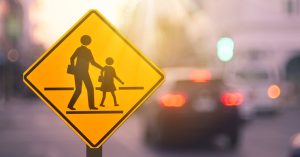 Less traffic did not mean fewer pedestrian accidents in the early months of the pandemic. In fact, preliminary traffic data shows there was roughly the same number of fatal pedestrian accidents in the first half of 2020 compared to the same period of 2019.
Less traffic did not mean fewer pedestrian accidents in the early months of the pandemic. In fact, preliminary traffic data shows there was roughly the same number of fatal pedestrian accidents in the first half of 2020 compared to the same period of 2019.
However, because there were fewer cars out, the Governor’s Highway Safety Association (GHSA) is actually projecting a 20 percent increase in the pedestrian fatality rate per one billion miles traveled, according to the report, “Pedestrian Traffic Fatalities by State: 2020 Preliminary Data.”
According to the data analysis, 2,957 pedestrians were killed in motor vehicle crashes during the first half of 2020. This is 6 more pedestrians than the same period of 2019, when the calculation included more vehicles on the road.
If trends continue, 2020 could end up having a record rate of fatal pedestrian accidents, despite having fewer cars on the road.
How much less traffic? The Federal Highway Work Administration reported a 16.5 percent decrease in traffic on all roads and streets in 2020. Here in Massachusetts, MassDOT reported an immediate 50 percent reduction in traffic volumes in April 2020. Massachusetts traffic volumes were still 20 percent lower than normal in September 2020, according to our past blog on COVID-19 traffic conditions in Massachusetts.
Larger Trend of Pedestrian Fatalities
For years, pedestrian fatalities have been on a dangerous rise in the U.S. Prior to COVID-19, pedestrian traffic fatalities stood at the highest levels since 1990. There was a striking 46 percent increase in these accidents from 2010 to 2019, according to the GHSA. In 2019, pedestrian traffic fatalities accounted for roughly 17 percent of all traffic deaths.
How Many Pedestrian Fatalities Occurred in Massachusetts During COVID-19 in 2020?
In preliminary data, Massachusetts reported 17 pedestrian fatalities in the first half of 2020, compared to 32 from January to June 2019.
Massachusetts was one of 20 states, along with Washington D.C., which reported a decrease in the actual number of pedestrians who were killed in car accidents or crashes involving trucks, SUVs and other vehicles.
In 27 other states, the number of pedestrian fatalities in car accidents and truck crashes increased.
Notably, more than half of all pedestrian fatalities happened in seven of the most populous states, including Arizona, California, Florida, Georgia, New York, North Carolina and Texas.
Contributing Factors in the Rising Number of Pedestrian Fatalities
The GHSA cited several trends in these fatalities, including drivers who sped down open roads simply because there was less traffic.
Distraction and fatigue also contributed to many pedestrian crashes, including when drivers were negligent and failed to stop at an intersection or stay within the marked lane. In Massachusetts, the new hands-free cell phone law took effect in April 2020 but the impact was effectively delayed by Covid-19.
In addition, the report touched on the trend of drivers choosing light trucks and SUVs more often. In 2019, sales of light trucks and SUVs far outpaced passenger vehicles. The larger vehicles accounted for 72 percent of all auto sales.
Pedestrians are still more likely to be injured by a driver in a passenger car. However, over the past 10 years, there has been a 69 percent increase in SUV accidents resulting in pedestrian fatalities.
With larger frames, SUVs have a unique front-end design which is particularly threatening to pedestrians. In a pedestrian SUV crash, the grill can strike a pedestrian’s pelvis or chest at nearly the same time the vehicle’s bumper hits the lower extremities, increasing the force of the impact.
Free Legal Consultation – Boston Pedestrian Accident Attorneys
At Breakstone, White & Gluck, our pedestrian accident lawyers are committed to fighting for the rights of those injured or killed by a driver’s negligence or wrongdoing. We have represented clients after pedestrian accidents in Boston, Cambridge and throughout Massachusetts. Our attorneys have recovered significant awards, including:
- $7.1 million for our client was who hit by an MBTA bus in a South Boston crosswalk
- $2.15 million for the estate of our client who was hit and killed in a parking lot, which was not equipped with pedestrian safety bollards
- $1.375 million for our client who was hit by a speeding MBTA bus in Roxbury
If you or a family member has been injured in a pedestrian crash, learn your legal rights. For a free legal consultation, contact Breakstone, White & Gluck at 800-379-1244 or 617-723-7676 or use our contact form.
Report: Fatal Pedestrian Accidents Rose Over Decade in Massachusetts
The New Year has begun with several reports of pedestrian accidents across Massachusetts. One pedestrian was seriously injured in Springfield. Two pedestrians were killed, one in Charlestown and one in Oxford.
On January 5th, Boston Police responded to a fatal scene at Charlestown’s City Square. A 92-year-old pedestrian died after being struck by a vehicle near the Charlestown Navy Yard and dragged for nearly a mile, according to news reports. Police later announced they had located a vehicle of interest.
A new report highlights the dangerous climb in pedestrian crashes in the U.S. Between 2009 and 2018, the number of pedestrians killed in U.S. car crashes rose by 55 percent, according to the AAA Foundation for Traffic Safety. This is a major increase, following three decades of decreases.
In Massachusetts, 725 pedestrians were killed during this period. Another 17,000 pedestrians were injured. Boston, Springfield, Worcester, New Bedford and Brockton reported the highest numbers of pedestrian injuries and fatalities in Massachusetts.
Other notes:
- Most pedestrian injuries occurred between 3 p.m. and 7 p.m.
- 28 percent of the pedestrian accident victims in Massachusetts were 65 or older
- 3 out of 4 pedestrians killed on U.S. roads in 2018 were hit during darkness
- 84 percent of pedestrian accidents over the 10 years occurred on streets with speed limits 30 mph or higher
- There was a 70 percent increase in pedestrians killed at non-intersection locations without crosswalks
AAA is calling on cities and states to improve traffic infrastructure to provide more protection to pedestrians.
This report is a good reminder for drivers to really watch for pedestrians. This is January and darkness comes early. We are also wrestling with the COVID-19 pandemic. Many Massachusetts residents are out of routine and may be walking in new areas and at different times. As a driver, you have the ability to slow down and that can make all the difference in preventing a pedestrian accident. According to StreetsBlog, a pedestrian struck by a driver traveling at 20 mph has a 93 percent chance of surviving.
Here are a few safety reminders for drivers:
- Obey traffic signs.
- Slow down. Travel below the speed limit.
- Stop for pedestrians at crosswalks.
- At traffic signals and stop signs, look front, back, right and left before you step on the gas. You have to watch for pedestrians as well as cyclists.
- Do not use your cell phone while driving.
Free Legal Consultation – Breakstone, White & Gluck
At Breakstone, White & Gluck, our Boston personal injury lawyers are known for our experience representing pedestrians who have been injured in motor vehicle accidents, truck collisions and bus accidents. We represent those injured by the negligence of others across Massachusetts, including in Boston, Cambridge, Somerville, Everett, Quincy and other areas. If you or a loved one has been injured, learn your legal rights.
For a free legal consultation, contact Breakstone, White & Gluck at 800-379-1244 or 617-723-7676 or use our contact form.
Tips to Protect Older Pedestrians From Vehicle Crashes During the Cold and Dark Winter in Massachusetts
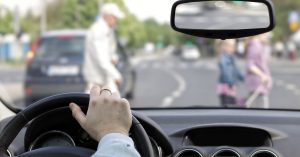 It is a fact: pedestrians age 65 and older face an increased risk for being injured by a car accident or truck crash. According to the Centers for Disease Control and Prevention (CDC), pedestrians of this age accounted for 1 in 5 pedestrian deaths in the U.S. They also suffered 1 in 10 percent of all injuries.
It is a fact: pedestrians age 65 and older face an increased risk for being injured by a car accident or truck crash. According to the Centers for Disease Control and Prevention (CDC), pedestrians of this age accounted for 1 in 5 pedestrian deaths in the U.S. They also suffered 1 in 10 percent of all injuries.
November, December and January are among the darkest months of the year in Massachusetts. At Breakstone, White & Gluck, our lawyers caution all pedestrians take steps to protect themselves. Start before you leave home. One of the most effective steps you can take is to wear a neon colored vest, jacket or other accessories so drivers can see you.
Safety Tips for Older Pedestrians
Arrange for a Ride. During the winter months, ask a friend or family member to give you a ride to the store and help you with other errands. If you do not have someone, call your local town or city hall to speak to their Council on Aging, which may be able to help arrange you a ride. You can go back to walking in the Spring when there is better visibility.
Use Crosswalks. In Massachusetts, pedestrians have the right of way when walking across the street in a crosswalk which has a “Walk” signal or green light.
Do Not Cross the Street Alone. Look for areas where there is a crossing guard if you can. Also look for areas where there are other pedestrians crossing. Do an honest evaluation; if you are walking much slower than other pedestrians, you should only cross when there is a crossing guard or accept a ride.
Avoid Complicated Intersections. Rather than walking through complex intersections, either accept a ride or change your route for the winter months. Also stay clear of wide intersections or roads with traffic passing in both directions.
Be Mindful of Traffic Conditions. If you walk, do so during daylight hours and when traffic is lightest. This is not just advice for crossing the street. Keep this in mind when you are walking through parking lots, where there is a high risk for pedestrian accidents at night.
Find Another Way to Walk For Exercise. Many of us – young and older – like to incorporate some walking for exercise into our daily routines of work and errands. If you miss walking, find a way to walk off the street. Due to COVID-19 restrictions, it is not safe to work out at a health club or gym. You may have to explore other options for exercise this year, such as hiking or even just walking on a lawn. Again, we encourage you to ask friends, family members and others in your community for suggestions.
Safety Reminders for Drivers
Use Reasonable Care and Travel Slowly. Massachusetts drivers have a responsibility to use reasonable care when driving. During the winter months, this means watching for pedestrians at all times, including when you get in your car and when you park. This is the time to utilize your vehicle’s back-up camera. Also watch when you exit your vehicle so you avoid dooring a pedestrian or a cyclist.
Travel Slowly. You cannot control all traffic conditions. But you can control your speed. By traveling slowly, even under the speed limit in residential neighborhoods, you have a greater ability to stop for pedestrians and avoid a pedestrian crash. This is important because older pedestrians are likely to take more time to cross the street. Many pedestrian car crashes occur because a driver misjudged the pedestrian’s speed.
Approach Familiar Places With Caution, Too. Take care even when driving near familiar places, such as a friend’s home, the pizza place down the street or a nearby grocery store. At night, there is a different traffic pace. During the pandemic, the pedestrian and vehicle traffic is changing weekly. There is a greater chance of car accidents in these conditions.
Be Aware of Eye Strain. If prescribed, drivers should wear their glasses at night. The rest of us should also be aware of the risks of eye strain and drowsiness at night. When possible, keep night driving trips short to keep your eyes strong.
Do Not Use Cell Phones. Months after the Massachusetts Hands-Free Driving Law took effect, drivers should know there is no tolerance for picking up a cell phone. The act of dialing a number and cradling a phone takes a driver’s attention off the road for at least several seconds. Drivers have caused many pedestrian crashes through cell phone use. On the same note, pedestrians should set aside cell phones while walking at night near traffic and minimize distractions.
Free Legal Consultation – Breakstone, White & Gluck
Breakstone, White & Gluck has represented pedestrians injured by negligent driving in car accidents, bus crashes and truck collisions across Massachusetts, including in Boston, Cambridge, Quincy, Somerville, Chelsea and Everett.
If you have been injured by the negligence or wrongdoing of someone else, learn your legal rights. Breakstone, White & Gluck is an accomplished Boston law firm known consistently recognized for our results for clients, including by Top 100 New England Super Lawyers, Top 100 Massachusetts Super Lawyers and Best Lawyers in America.
In Boston, we are known for our experience and expertise in representing pedestrians who have been injured in MBTA bus accidents. We won a landmark personal injury case, resulting in a $7.1 million verdict for our client, after trial and appeals to the state’s highest court. Our client had the horrific experience of being struck by a MBTA bus in a South Boston crosswalk. The driver had admitted fault, and the MBTA police investigation confirmed the finding. But the MBTA refused to even make an offer of settlement and our attorneys pursued an award at trial.
For a free legal consultation, contact Breakstone, White & Gluck at 800-379-1244 or 617-723-7676. You can also use our contact form.
Drivers Making Unsafe Turns Cause Many Pedestrian Accidents in Intersections
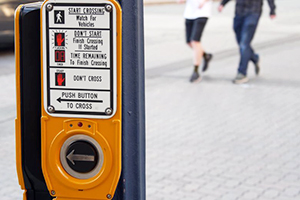 Many of us will head back to work and school in September and October, at least part time. Due to COVID-19 and our new schedules, some of us may choose to walk for the first time, instead of relying on public transportation. If you walk, use caution – especially in intersections.
Many of us will head back to work and school in September and October, at least part time. Due to COVID-19 and our new schedules, some of us may choose to walk for the first time, instead of relying on public transportation. If you walk, use caution – especially in intersections.
Nearly 20 percent of all traffic accidents result in pedestrian fatalities, according to the National Safety Council. An estimated 40 percent of all pedestrian accidents occur in intersections, according to the Federal Highway Administration (FHWA).
A few facts from a FHWA study on pedestrian accidents in intersections:
Drivers are making unsafe turns. According to this study, one in five pedestrian accidents at signalized intersections occurred when vehicles made unsafe turns.
Left-turning vehicles cause more pedestrian accidents at intersections. Pedestrians at signalized intersections are more likely to be hit by a left-turning vehicle. Researchers found 60 percent of drivers who hit pedestrians turned left, while 40 percent turned right. The FHWA researchers noted a driver’s view may be impeded more when turning left.
Pedestrians walk safer in groups. Researchers concluded that pedestrians walking in groups were less likely to be hit by left-turning vehicles than those walking alone. Again, this may be due to drivers being able to see pedestrians better. There was a notable difference – three out of four pedestrians hit by left-turning vehicles were walking alone.
Take Steps to Protect Yourself at Intersections
If you are a pedestrian, cars and trucks have the advantage in size. You have to assume drivers won’t always be able to see you as traffic moves. You also have to be prepared for negligent operators, who are speeding or allow themselves to become distracted.
You can take steps to protect yourself though. Purchasing a neon vest is a good place to start. If a driver can see you, they may be more likely to slow down. Also take advantage of technology. Use Google Maps or another traffic app to plan your walking route.
At intersections, look for crosswalks with pedestrian traffic signals. Wait for the walk signals before crossing. Drivers have a responsibility to yield the right of way to pedestrians in all marked crosswalks in Massachusetts. Yet pedestrian signals are more visible and can make a big difference in protecting pedestrians.
Drivers also have a responsibility to check for pedestrians (and cyclists) before turning at intersections. Studies have found that drivers are not looking enough – which is frustrating because more cars now have rearview mirror cameras to help them. Drivers need to be scanning the intersection more in front and behind for pedestrians and cyclists. This is critical in Boston, Cambridge and other cities because commercial truck drivers travel much higher up than pedestrians and cyclists and often, there is no eye contact. But truck drivers are not the only risk. Pedestrians have to be aware of all vehicles – SUVs, cars, buses. These drivers should also be paying attention to you.
Breakstone, White & Gluck – Boston and Cambridge Pedestrian Accident Lawyers
At Breakstone, White & Gluck, our Boston personal injury lawyers fight for justice for those who have been seriously injured by negligence or wrongdoing. With more than 100 years combined experience, our attorneys specialize in the representation of those injured in pedestrian accidents and bicycle crashes in Massachusetts. For a free legal consultation, call our attorneys today at 800-379-1244 or 617-723-7676 or use our contact form.
Now, a Focus on Pedestrian Safety in Massachusetts
After an extended leave, many Massachusetts families are now getting ready for back to school and a return to the workplace – at least part time to start. If you are going back and plan to commute on foot, we have some safety tips to share.
First, walking has so many benefits, including fresh air and exercise. We hope you can relax and enjoy this time and decompress. Transitioning back to work and school will be a challenge at times.
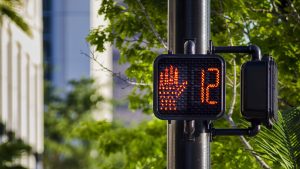
As Massachusetts transitions back to work and school, more people will be walking. Our tips to help pedestrian commuters stay safe.
But still, it is important to remember the risk for pedestrian accidents and observe traffic conditions as you walk. If you normally drive or use public transportation, your commute will be much different on foot.
Before COVID-19, pedestrian accidents accounted 20 percent of all traffic fatalities in Massachusetts, according to the National Highway Traffic Safety Administration (NHTSA). Each year, as students head back to school, there is a lot of talk about pedestrian safety. This year, attention to safety is even more critical because traffic will be unpredictable for a while. You can also expect more pedestrians as well.
Drivers, especially truck drivers and bus drivers, must be vigilant in watching out for pedestrians and cyclists. But pedestrians should also be vigilant and take precautions.
Our pedestrian safety tips:
Be Visible. Dress to stand out to traffic. Think bright – a vest, jacket, shirt or baseball cap with neon-reflective material. You do not have to spend a lot of money. You can find neon-reflective on all types of products in all price ranges.
If you are a parent, encourage your children to wear bright colors. Remember, your child’s backpack doesn’t just carry books; you can purchase one with neon-reflective material and make it a tool for safety.
Use Sidewalks and Crosswalks. Always look for sidewalks and walk on them. If there are no sidewalks, walk as far as you can left, facing traffic. Use crosswalks with pedestrian traffic signals.
Learn Your Route. Take some time to plan a good route for yourself or your children. You can use online map tools, but try to memorize your path – and a backup route. Locate pedestrian crosswalks and traffic signals. Wait for the walk signal before crossing. Look for streets which have fewer lanes of traffic to walk across. Also watch for bike lanes.
Remember School Safety. School bus drivers are responsible for getting children to and from school safely. This is the most critical commute on Massachusetts roads.
Whether you are a parent, driver or pedestrian, you can support school bus safety. When a school bus flashes its yellow lights, it is slowing down. When it stops, extends its arm and flashes red, the bus has stopped to allow children to cross. Drivers must stay 100 feet back.
As a pedestrian, you may keep walking if you are on the sidewalk and don’t interfere with the school bus. But there are times when you should stop if you are walking on the road. Allow the school bus driver to safely stop so children can board safely. Also allow vehicle to safely depart.
Watch for Large Trucks. We urge pedestrians to keep your distance from trucks. Each year, truck crashes injure and kill pedestrians in Massachusetts. The larger the truck, the greater the blindspot and the greater the risk to you.
Trucks can strike pedestrians head-on, but they can also hit them from behind or from the side. Pedestrians can be swept under a truck and dragged. This can happen when pedestrians are walking alongside the road or as they wait to cross a road and a truck approaches.
Because large trucks are everywhere in the Boston area, your best defense is to watch for them, stay on sidewalks as much as possible and find crosswalks with pedestrian safety signals. Truck drivers may not always check for pedestrians. They are more likely to tune into traffic signals in front of them.
Remember, trucks can also be deadly to cyclists. Right hook accidents occur when a driver fails to give a cyclist enough room when turning right at an intersection. What you can do to prevent a serious bicycle accident: Stay on the sidewalk as much as possible. Leave the bike lanes and outer traffic lanes to bicyclists so they have room to adjust to traffic conditions.
Check for Traffic Updates. Before leaving for work or school, check local traffic updates and police department websites. After the COVID-19 closures, some Boston area communities have made changes to accommodate more pedestrians or allowed restaurants to set up outdoor dining in streets and sidewalks. This may impact your commute to work or school. Again, this is another reason to tuck a lightweight neon vest in your bag. Be visible so drivers have a warning that they should stop for you.
Stop and Report Pedestrian Accidents: If you are negligent and hit a driver, you have a responsibility under Massachusetts law to stop and report the crash to police. As stressful as this situation may be, you have to stop, call 911 and make sure the person receives immediate medical attention.
But often, other pedestrians and other drivers witness pedestrian accidents. Stop and report the crash to 911, even if you were not involved. Never assume another witness will. About 1 in 5 pedestrian crashes involve hit and run drivers, according to AAA research. In these cases, pedestrian accident victims are left without access to the driver and their auto insurance policy, which should provide compensation for their medical bills and other financial losses.
About Breakstone, White & Gluck – Boston Personal Injury Lawyers
With more than 100 years combined experience, Breakstone, White & Gluck specializes in representing those injured by negligent and reckless driving in Boston, Cambridge, Quincy and across Massachusetts. Our attorneys are highly experienced in advocating for victims and families after pedestrian accidents and crosswalk crashes. We have secured compensation from negligent drivers as well as major bus operators, such as the MBTA. If you have been injured, learn your legal rights. For a free consultation, contact Breakstone, White & Gluck at 800-379-1244 or 617-723-7676 or use our contact form.
Read about some of our awards:
$7.1 Million – Verdict for pedestrian seriously injured in MBTA bus accident
Our attorneys secured a $7.1 million verdict for our client who was hit by an MBTA bus in a South Boston crosswalk.
$2.15 Million – Settlement for pedestrian injured by crash at strip mall
Our attorneys negotiated a $2.15 million settlement after our client was struck by a vehicle as he left a strip mall.
$1.375 Million – Settlement for pedestrian struck by speeding MBTA bus
Our attorneys reached a $1.375 million settlement after our client was struck by an MBTA bus in Roxbury and suffered a traumatic brain injury.
$1.25 Million – Wrongful death settlement for pedestrian hit in crosswalk
Our attorneys negotiated a $1.25 million settlement for family members of a pedestrian struck and killed in a crosswalk.
COVID-19 Safety for Cyclists and Pedestrians in Boston and Massachusetts

Massachusetts safety groups share COVID-19 advisories for cyclists and pedestrians.
At Breakstone, White & Gluck, our attorneys encourage you to follow the Massachusetts “stay at home” advisory. When you go out for essential errands, the CDC advises you to wear a face mask and follow social distance guidelines, staying at least 6 feet apart from other people.
Yet it is also important to get outside for a few minutes of fresh air each day, even if you just stay in your own yard or walk down the street. With many of us so distressed, this can be hard to do, but if you are healthy and able, we have compiled these safety tips from the CDC, the Massachusetts Covid-19 website and bike and pedestrian groups we support.
Massachusetts Stay at Home Advisory
State officials have advised light exercise, such as a walk or run around your neighborhood, is acceptable but you have to follow social distancing and other guidelines. Playing close contact sports with others is against the state guidelines. Mass DPH Health Advisory: Stay at Home (March 24, 2020).
MassBike
MassBike issued a COVID-19 safety update, dated April 19, 2020, saying its response has generally been to follow the Massachusetts Governor’s Office and the Centers for Disease Control. Cyclists can ride, “But MassBike certainly agrees with, and wants to reiterate, the official message of #StayHomeSaveLives. We encourage you all to stay home as best you can.”
MassBike’s safety tips included:
- Never ride if you are ill or are experiencing of COVID-19.
- Ride solo or only with others you live with.
- Wear a mask.
- Carry your supplies so you can avoid stopping and and interacting with people.
- Look for a place where others are not riding.
- Ride with caution.
The CDC recommends people stay at least six feet apart, but how can you measure distance when you are moving? That’s a good question and in its post, MassBike mentioned a Belgium study on social distancing on bikes. The study advises people to walk about 12-15 feet away to maintain safe social distancing or about 30 feet for running and slow biking. When cycling fast, bicyclists should keep at least 60 feet apart.
Boston Cyclists Union
The Boston Cyclists Union says yes, cyclists can still ride. If you do, the organization recommends riding alone or only with others in your home. It also suggests wearing a mask to protect yourselves and others. Read the Boston Cyclists Union advisory, April 1, 2020.
WalkBoston
WalkBoston released an update on March 27, 2020. It also warned the public to practice social distancing when walking. The organization, active in Boston and across Massachusetts, offers a weekly email newsletter.
Massachusetts City and Town Advisories on Expanded Recreation Areas
Some communities are talking about opening up roads so pedestrians and cyclists have more room to exercise and follow social distance guidelines. In Brookline, the Transportation Board removed parking and traffic lanes and opened up parts of Beacon Street, Brookline Avenue and Harvard Street to pedestrians.
The City of Boston also closed three Department of Conservation and Recreation (DCR) parkways to traffic, giving pedestrians and cyclists more room. These include the William J. Day Boulevard, Francis Parkman Drive and Greenough Boulevard.
In Cambridge, the City Council was also considering closing roads along Memorial Drive.
Final Note:
In addition to taking COVID-19 safety precautions, cyclists must remember to follow fundamentals, such as always wearing a properly-fitted helmet and using rear and front lights on your bike. If you need a new helmet, supplies or a tune-up, local bike shops are considered “essential businesses” and are allowed to open. Finally, both cyclists and pedestrians can protect themselves by wearing brightly colored clothing or a neon safety vest to stand out. While traffic has decreased on many roads, there are still many drivers out and it’s important to be vigilant about safety.
If you are interested in learning more about bike safety, consider checking out our articles:
Other COVID-19 Resources
CDC Advisory on Protective Face Masks
State of Massachusetts COVID-19 Updates
Consumer Reports, “Bike Riding Safety During the Coronavirus Pandemic,” April 10, 2020
Free Legal Consultation – Boston Personal Injury Lawyers
Breakstone, White & Gluck supports cycling and pedestrian safety in Massachusetts. Through our Project KidSafe campaign, we are committed to protecting children on bicycles from concussions and traumatic brain injuries.
If you have been injured, learn your legal rights. Breakstone, White & Gluck represents those injured by negligence and recklessness throughout Massachusetts, including in car accidents, truck accidents, motorcycle accidents, bicycle accidents and pedestrian accidents. For a free legal consultation, contact us at 800-379-1244 or 617-723-7676. You can also use our contact form.
Protecting Older Pedestrians From Car Accidents in Massachusetts

Massachusetts state officials are working to improve safety for older pedestrians.
When the snow falls, Massachusetts becomes more treacherous for everyone who walks. Older pedestrians are particularly vulnerable.
Massachusetts now has more than one million residents who are 65 or older – or roughly 15 percent of our population, according to a recent report, “Risk Factors for Older Pedestrian Injuries and Fatalities in MA.” The report was prepared for the Massachusetts Department of Transportation (MassDOT) in August 2019.
As Massachusetts residents live longer, many are more likely to be out walking for health or transportation. The state report identifies common risks to older pedestrians:
Winter Months. Researchers studied 4,472 pedestrian crashes across Massachusetts between 2006 and 2015, reporting crashes involving older pedestrians peak at 5 p.m. and during the month of December. November and January are also high risk months for older pedestrians, as they navigate darker conditions. When snow and ice is not cleared, sidewalks, parking lots and driveways can also contribute to unsafe conditions, as do drivers who fail to look for pedestrians and stop at crosswalks.
Causes of Older Pedestrian Crashes. Drivers who caused older pedestrian crashes were often inattentive, failed to yield the right of way or had trouble with visibility.
Where Older Pedestrians Were Hit. Older pedestrians were often hit at crosswalks at intersections, where they should have safety protections.
Where Older Pedestrians Crashes Occur. Researchers found Cambridge, Fall River, Lynn and New Bedford among the the top communities for highest number of older pedestrian crashes and the highest per capita.
Changing Face of Pedestrian Accidents. Crash rates involving “younger old” pedestrians – those between age 55 and 74 – increased. Crash rates among older pedestrians (75 and older) remained consistent.
Community Health. Communities with higher rates of disability reported greater rates of older pedestrian crashes. These included the urban neighborhoods of Boston, Lawrence and Chelsea.
Community Amenities. Communities with a high number of cultural amenities within walking distance – such as libraries and fitness centers – had higher crash rates among older pedestrians.
Not Just Older Pedestrians in Massachusetts. This state report comes as pedestrian fatalities rise across the country. Last March, the Governors Highway Safety Association announced a 35 percent increase in pedestrian deaths from 10 years ago (Streets Blog). This was the highest number of pedestrian fatalities since 1990.
Nationally, research shows 48 percent of pedestrian fatalities involved victims 50 and older, according to the Massachusetts study. Meanwhile, Massachusetts reports half of all pedestrian fatalities involve a pedestrian 55 and older.
Report Recommendations
The state report recommends work to protect older pedestrians be tied in with the Governor’s Council to Address Aging in Massachusetts, which was established in 2017. Among other advisories, the state report also sought infrastructure improvements in certain communities and creation of a winter public awareness campaign aimed at protecting older pedestrians.
Our Safety Tips for Pedestrians During Winter
Wear Neon. Pedestrians can make themselves more visible to traffic by wearing neon colors and neon reflective tape. Consider buying neon jackets, vests, hats and gloves to stand out.
Our Safety Tips for Drivers During Winter
Stop at Crosswalks. Make eye contact with pedestrians at crosswalks. Stop as they cross.
Other Drivers. Stop if you are approaching a driver who has stopped for a pedestrian at a crosswalk. Allow the pedestrian to completely cross the street.
Avoid Night Driving At Times. If you are overtired or are having trouble seeing at night, don’t drive. Make an appointment to have a doctor check your vision. Wear your eyeglasses as prescribed when you drive.
Limit Alcohol Consumption. Never drive while intoxicated. Use the designated driver system.
Free Legal Consultation – Boston Personal Injury Lawyers
With over 100 years combined experience, Breakstone, White & Gluck has been consistently recognized for our results in personal injury cases in Massachusetts, including by Top 100 New England Super Lawyers and U.S. News Best Law Firms. If you or a loved one has been injured by someone’s negligence, it is in your best interests to consult an experienced personal injury lawyer. For a free legal consultation, contact our attorneys at 800-379-1244 or 617-723-7676 or use our contact form.
Bicyclist and Pedestrian Deaths Keep Rising
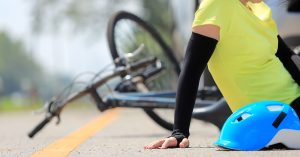 New federal data shows a 2.4 percent reduction in overall traffic deaths last year. But that’s not the full story. The roads were not any safer for pedestrians and bicyclists last year. These groups saw an increase in deaths, now making up nearly 20 percent of all traffic deaths. Many say it’s time to accelerate the conversation on safe road design.
New federal data shows a 2.4 percent reduction in overall traffic deaths last year. But that’s not the full story. The roads were not any safer for pedestrians and bicyclists last year. These groups saw an increase in deaths, now making up nearly 20 percent of all traffic deaths. Many say it’s time to accelerate the conversation on safe road design.
The Washington Post recently reported on the new data, which comes from the National Highway Traffic Safety Administration (NHTSA)’s Fatality Analysis Reporting System.
It shows nearly 36,600 people died in traffic accidents in 2018, a 2.4 percent decrease from 2017, according to The Washington Post. Traffic experts cite several areas of progress. There were fewer deaths caused by speeding and drinking and driving, and a 10 percent reduction in children’s fatalities. Motorcycle fatalities also declined about 5 percent.
What remains troublesome is bicyclists and pedestrians are at high risk. Bicycle accidents and pedestrian accidents are claiming more lives than ever – about 20 percent of all traffic deaths combined. This is a sharp rise, particularly in pedestrian deaths. Just 10 years ago, pedestrians made up 12 percent of all traffic deaths. They now represent 17 percent of all traffic fatalities.
The data shows that 6,283 pedestrians were killed in 2018, a 3.4 percent increase. Another 857 people were killed on bikes or similar non-motorized vehicles, a 6.3 percent increase.
With this new data, many are considering our nation’s antiquated roads, which the Governors Highway Safety Association says were not designed to accommodate so many pedestrians and bicyclists. Over the past decade, cities have encouraged walking and biking as a way to beat the traffic congestion. But use has far exceeded the visions of planners, especially when you considered developments, such as bike-shares, e-scooters and self-driving cars.
The Governors Highways Safety Association further stated that a combination of initiatives would be necessary to improve safety for pedestrians and cyclists, from road engineering to educational approaches.
Pedestrian and Bike Safety in the Late Fall in Massachusetts
This is a challenging time of the year for bike commuters and pedestrians in Massachusetts. The days are getting shorter and darker. And you have to be aware of the statistics. According to the NHTSA data, about 76 percent of pedestrian traffic fatalities occur after dark.
If you walk, consider keeping a neon safety vest in your work bag. Wear it when you go to work and as you leave work. Continue to use crosswalks with traffic signal buttons. Cross with other people.
If you ride your bike, wear your bike helmet and use bike lights. Bike lights are required under Massachusetts law. You must have a white light in front of your bike and a red light in back. Read our article, Facts About Massachusetts Bicycle Laws, to learn more.
Free Legal Consultation – Boston Pedestrian and Bicycle Accident Lawyers
With more than 100 years combined experience, Breakstone, White & Gluck is a leading personal injury law firm in Boston. Our attorneys specialize in representing those injured in motor vehicle accidents, including pedestrians and bicyclists, in Boston, Cambridge and across Massachusetts. If you have been injured, learn your legal rights for seeking financial compensation for your losses, including medical expenses, lost wages and pain and suffering. For a free legal consultation, contact us at 800-379-1244 or 617-723-7676 or use our contact form.


